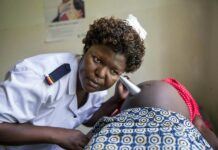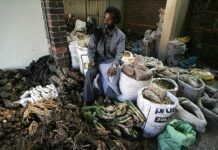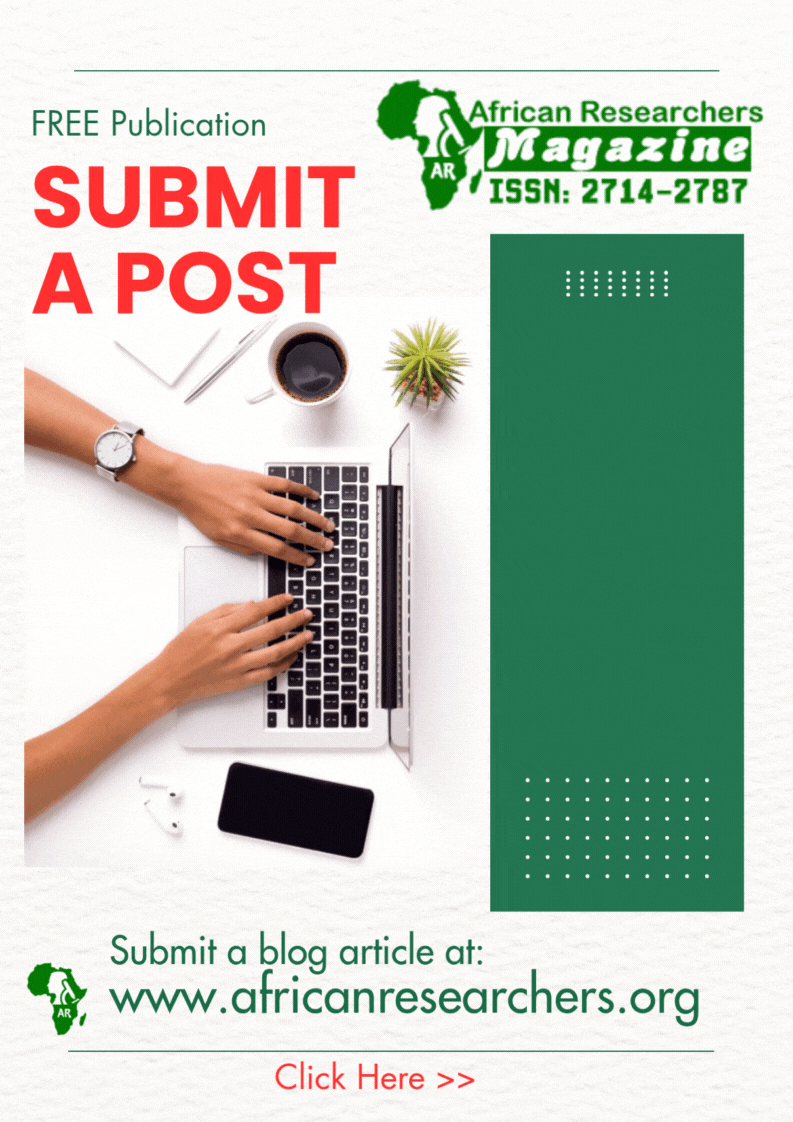Illustrative Image: Genetic Diversity in Snake Venom Challenges Antivenom Development in Sub-Saharan Africa, Study Finds
Image Source & Credit: khmertimeskh.com
Ownership and Usage Policy
A recent study by Ayesiga et al. (2025) titled “Genetic variability in snake venom and its implications for antivenom development in sub-Saharan Africa,” published in Transactions of The Royal Society of Tropical Medicine and Hygiene, reveals that genetic variability in snake venom significantly impacts the effectiveness of antivenoms in sub-Saharan Africa.
“
Genetic variability in snake venom significantly reduces antivenom effectiveness, highlighting the need for region-specific, biotechnology-driven treatment strategies in Africa.
-Ayesiga et al. 2025
The study explores the complex nature of snake venom and how its genetic diversity poses significant challenges to developing effective treatments. In sub-Saharan Africa, where snakebite envenomation is a major public health issue, the development of efficient antivenoms is complicated by the vast array of venomous snake species and the genetic variability in their venom. Snake venom is composed of a wide variety of proteins and enzymes, each contributing to its toxic effects. This diversity—driven by genetic differences, environmental factors, prey availability, and evolutionary pressures—means that the composition of venom can vary significantly even within the same species. As a result, creating a universal or broadly effective antivenom becomes particularly difficult.
Current antivenoms, such as SAIMR Polyvalent and those from Premium Serums & Vaccines, are designed to be cross-reactive across several species. However, their effectiveness is inconsistent due to the molecular differences in venom composition. The geographic distribution of venomous snakes across Africa further complicates treatment efforts, making region-specific solutions necessary. Technological innovations in biotechnology offer promising alternatives. New-generation therapies—including recombinant and monoclonal antibodies, synthetic antivenoms, and small-molecule inhibitors—are emerging as more targeted and potentially safer treatments. These approaches aim to overcome the limitations of traditional plasma-derived antivenoms, which often suffer from batch variability and limited species coverage.
Despite these advancements, a major barrier remains: the lack of sufficient genomic research infrastructure in sub-Saharan Africa. There is an urgent need for investment in local genomic studies, advanced testing capabilities, and regional collaboration to better understand the genetic underpinnings of venom diversity. The study concludes that leveraging genomic data and biotechnological tools is crucial for developing next-generation antivenoms that are both effective and accessible. Enhancing our understanding of venom genetics can play a vital role in reducing snakebite-related deaths and improving public health outcomes across the continent.
How the Study was Conducted
The authors gathered and analyzed secondary data from previously published studies, scientific articles, and reports. The focus was on understanding how genetic diversity among snake species affects venom protein composition and, consequently, antivenom efficacy. By reviewing proteomic and genomic data, the study explored how venom variation complicates the production of broadly effective antivenoms.
What the Authors Found
The authors found that genetic variability in snake venom significantly impacts the effectiveness of antivenoms in sub-Saharan Africa. Snake venom is composed of a complex array of proteins and enzymes, and its composition varies significantly between species. This biochemical diversity is driven by genetic mutations, ecological factors, and prey availability, resulting in region-specific venom profiles. Such variability makes it difficult to create a universal antivenom that can effectively neutralize all venom types.
Why is this important
High Snakebite Mortality & Morbidity: Thousands of people in sub-Saharan Africa suffer from snakebites every year, leading to severe health complications and death due to the lack of effective treatment.
Venom Complexity & Genetic Variation: The genetic variability of snake venom makes it difficult to develop a universal antivenom that works across multiple snake species.
Challenges with Existing Antivenoms: Current antivenoms show limited cross-reactivity, meaning they may not effectively neutralize venom from all medically significant snake species.
Need for Scientific Innovation: The study highlights the importance of biotechnological advancements such as recombinant antibodies, monoclonal antibodies, and synthetic antivenoms to improve treatment outcomes.
Limited Research Capacity in Africa: There’s a lack of genomic research facilities and testing capacity in many African countries, which hinders progress in antivenom development.
Potential for Future Solutions: By understanding venom genetics, researchers can design more targeted antivenoms, leading to better snakebite management and saving lives.
What the Authors Recommended
- The author suggests that there is an urgent need to increase genomic and proteomic studies focused on local snake species. A deeper understanding of venom variability at the molecular level will support the development of more precise and effective antivenoms.
- Many countries in sub-Saharan Africa lack the necessary research facilities and laboratory capacity for venom analysis. Investing in modern testing infrastructure is essential for antivenom research, validation, and quality control.
- The study encourages the adoption of advanced technologies—such as recombinant antibodies, monoclonal antibodies, and synthetic antivenoms—as promising alternatives to traditional plasma-derived antivenoms. These approaches offer improved safety, specificity, and scalability.
- The study emphasizes collaborative partnerships between African researchers, governments, academic institutions, and pharmaceutical companies as vital. Cross-border cooperation can accelerate the sharing of data, resources, and expertise, leading to faster and more effective antivenom development.
- Rather than relying solely on broad-spectrum solutions, the authors recommend producing targeted antivenoms that are tailored to neutralize the venoms of specific high-risk snake species prevalent in different regions.
- Furthermore, improving community awareness of snakebite risks, prevention strategies, and emergency first-aid measures can significantly reduce fatalities. Training healthcare workers to recognize and treat envenomation effectively is also essential for improving outcomes.
In conclusion, the study by Ayesiga et al. underscores the urgent need to rethink antivenom development strategies in sub-Saharan Africa by embracing genomic research and biotechnological innovation. As snakebite envenomation continues to pose a serious public health threat, especially in resource-limited settings, investing in region-specific solutions, modern infrastructure, and collaborative scientific efforts is essential. By advancing our understanding of venom genetics and adopting next-generation therapies, we can pave the way for more effective, accessible, and life-saving antivenoms across the continent.
















 The African Research (AR) Index is a comprehensive scholarly directory and database focused explicitly on journal publishers that publish and disseminate African research.
The African Research (AR) Index is a comprehensive scholarly directory and database focused explicitly on journal publishers that publish and disseminate African research.

